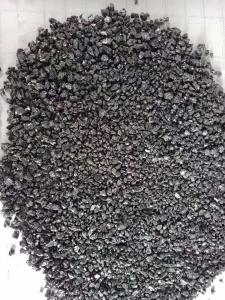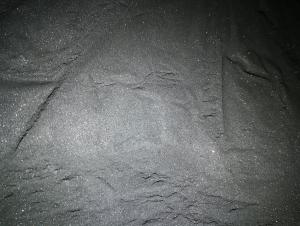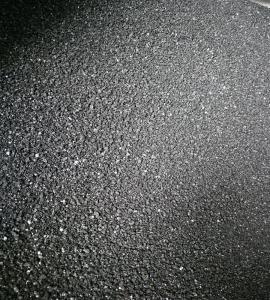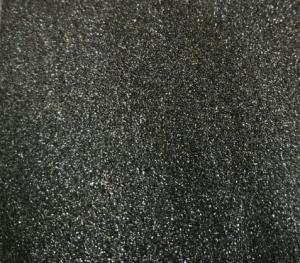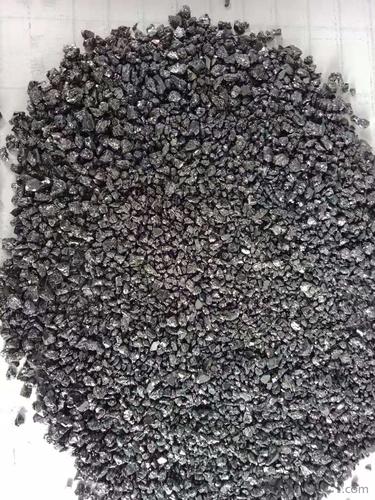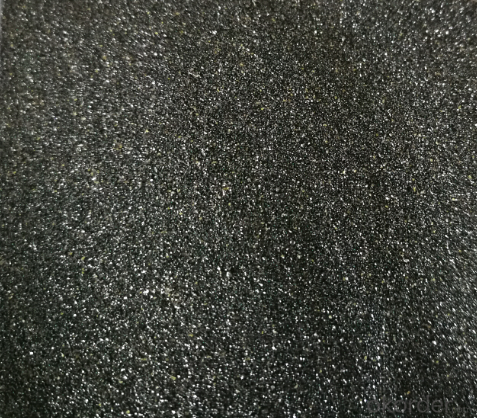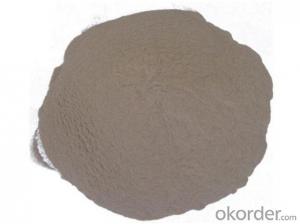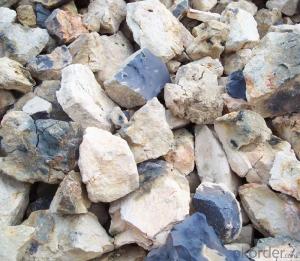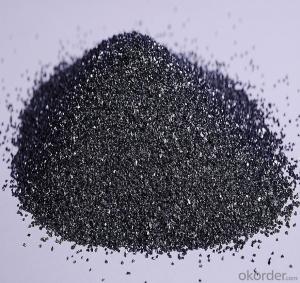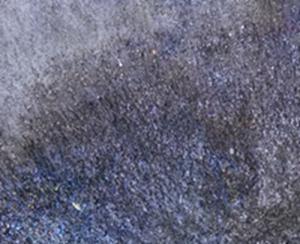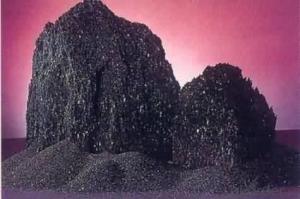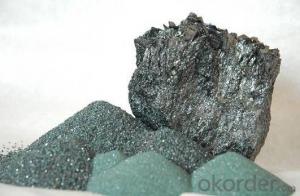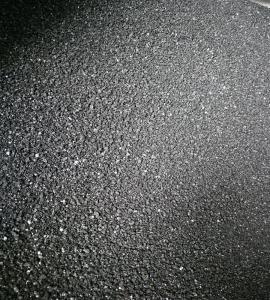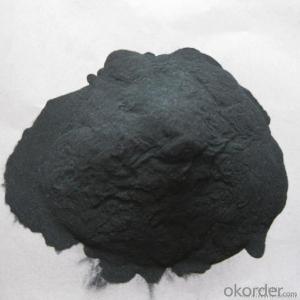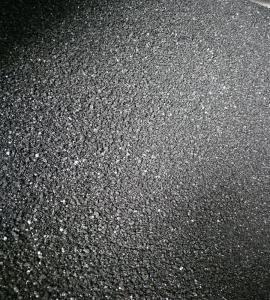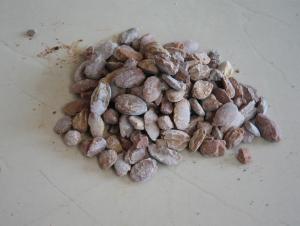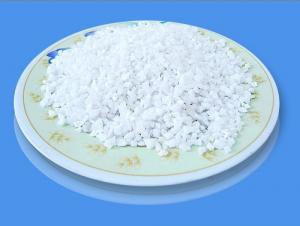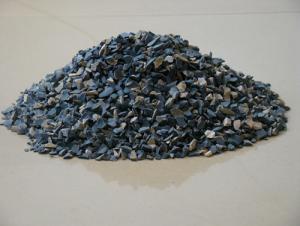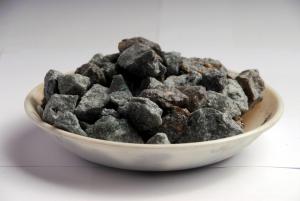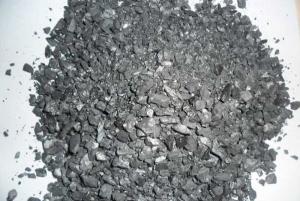Silicon Carbide for Refractory Field SIC97
- Loading Port:
- China main port
- Payment Terms:
- TT or LC
- Min Order Qty:
- 25 m.t.
- Supply Capability:
- 500 m.t./month
OKorder Service Pledge
OKorder Financial Service
You Might Also Like
Product Description
Quick Details
Place of Origin: Ninxia, China
Application: Refractory, Steel making
Shape: Granule, Powder
Material: SiC, F.C
Chemical Composition: SiC, F.C
Product name: Silicon Carbide / Black Sic
Payments terms: 1. 100% L/C at sight 2. 30% T/T prepayment, balance against BL copy
Delivery Time: Within 30 days after receiving L/C or 30% T/T prepayment
Usage: Metallurgy, Foundry, Abrasive, Refractory, Deoxidizer
Advantage: Timely Shipment, High quality, Good performance
Packing: 25kg/bag, 1mt/bag or as customers' requirements
Size: 0-1/1-3/3-5mm,1-10mm, 100mesh etc
Sample supply: free sample
Color: Black
MOQ: 25Mt
Supply Ability
Supply Ability:500 Metric Ton/Metric Tons per Month
Silicon Carbide
Type | Chemical Composition | |
SiC | F.C | |
≥ | ≤ | |
SiC97 | 97 | 0.3 |
SiC95 | 95 | 0.8 |
SiC90 | 90 | 2.5 |
SiC88 | 88 | 3 |
Size: 0-1/1-3/3-5mm,1-10mm, 100mesh or as customers' requirements. | ||
Packaging & Delivery
Packaging Details1MT/bag or as customers' requirements.
PortTianjin port
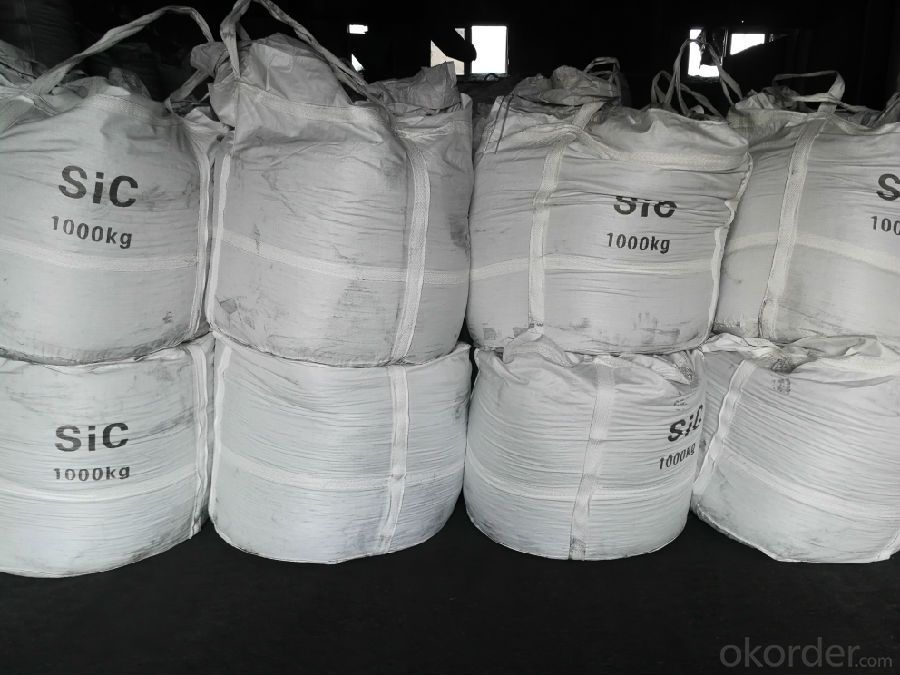
Loading:
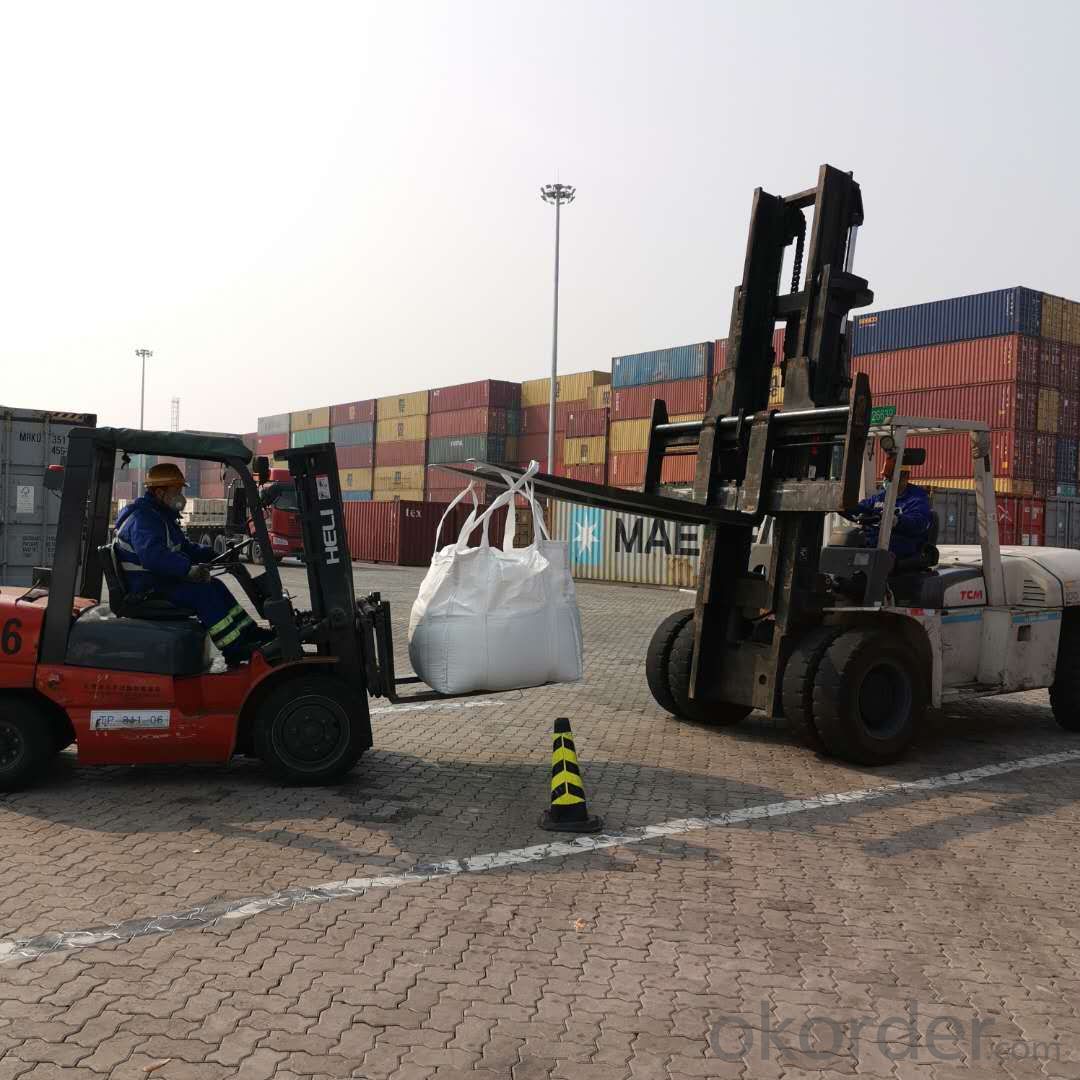
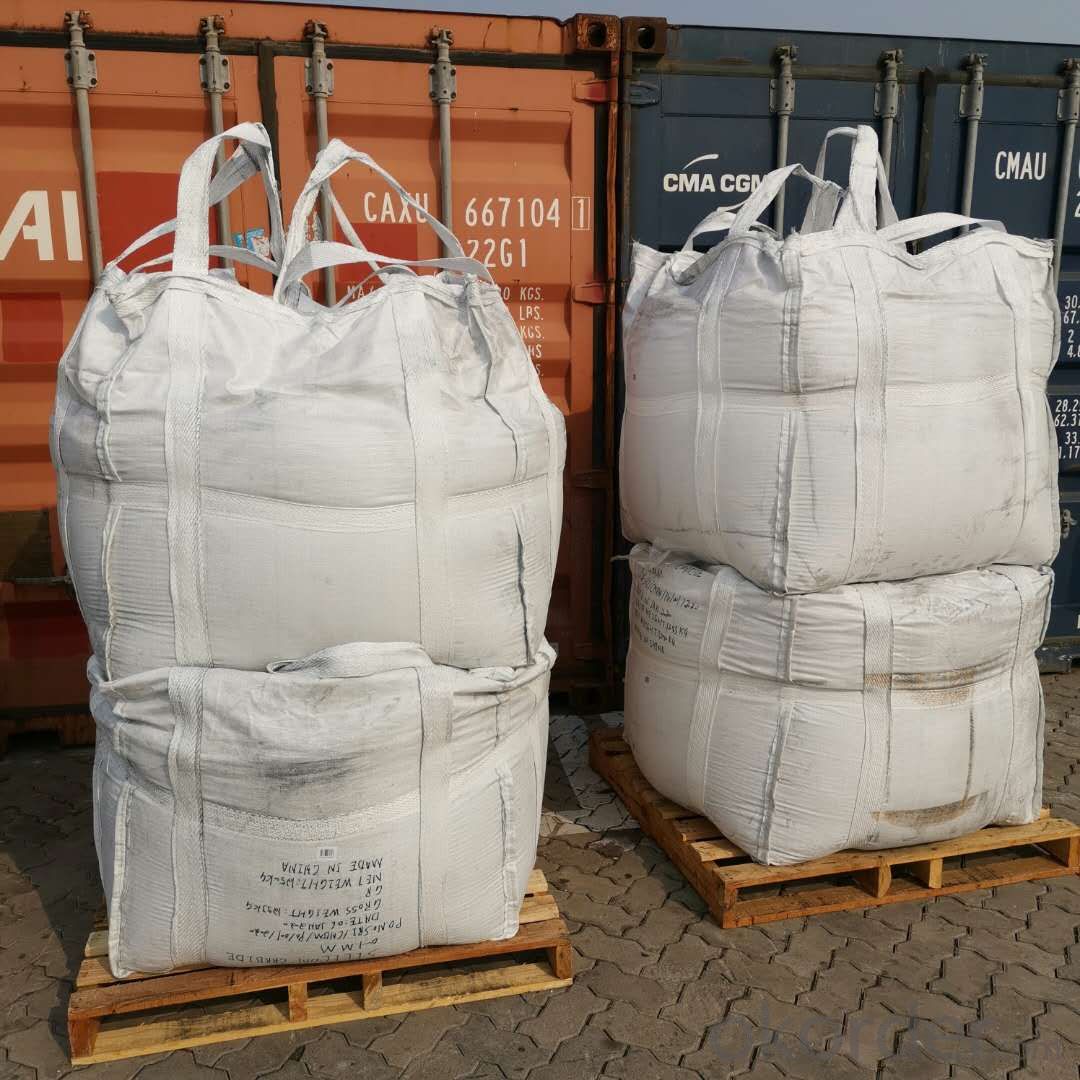
Description:
Silicon Carbide is produced by melting a mixture of silica sand and cokes in ultra high power electric furnaces. Silicon Carbide is chemically stable and has high corrosion resistance, which makes it hard to corrode from exposure to alkali or acid. Silicon carbide is also characterized by its high hardness, outstanding heat resistance, low thermal expansion, resistance to chemical reaction, and ability to function as a semiconductor.
Application:
SiC is suitable for cupola and electric furnace, widely used in iron foundries and in steel mills as deoxidizing agent, especially in ladle furnaces and electric arc furnaces during slag treatment. Silicon carbide can improve the temperature of molten steel rapidly, shorten the melting time, play the role of deoxidizing, increasing carbon and silicon, heating to improve the quality of steel.
Feature:
Black SiC, dissolved in a basic oxygen furnace used for making steel, acts as a fuel.
1.Additional energy liberated allows the furnace to process more scrap with the same charge of hot metal.
2.Silicon Carbide can also be used to raise temperatures and adjust the carbon and silicon content.
3.Silicon carbide / SiC can reduce the cost of production, produce cleaner steel and lower emissions.
Chemical Composition
- Q: What advantage and disadvantages it has compared to common fire insulation materials
- Main advantage of A-level fire proof heat retaining plate is A-level non-conbustibility. Now residential areas strictly require the external walls to be high-level fire proof, to be specific, high fire resistance, non combustible. Standards for evaluation varies according to different types, which includes anti-corrosion, acid and alkali resistance, waterproof, anti termites and so on. Disadvantage is the insulation effect is quite ordinary. It will absorb water, get deformed, need some water prevention measures after constrcuting thermal insulating layer for it. Its thermal conductivity far below the benzene plate, and plastic extruded palte, half the thickness of the polyurethane insulation layer can reach heat perservation effectiveness of the benzene plate and extruded plate of the same thickness.
- Q: What's the fire endurance of hollow brick?
- This question is really very simple. It is better no to exceed 1050℃, or it will be easily burnt. I think 980 ℃ is ok in reality. It depends on how thick your wall is because fire endurance of hollow brick is related to wall thickness. 24 wall can generally endure for 3 hours or more.
- Q: Which refractory material is better in China? Industrial furnace, mainly in non-ferrous industries, glass kiln, cement kiln business.
- Such solid nano microporous insulation material with nano inorganic refractory powder special, with a huge surface area, nano particles contact between the minimum point contact point contact thermal resistance is very large, the heat conduction effect of the material becomes very small, resulting in heat conduction coefficient of solid such nano porous insulation materials very small; nano pores formed of nanoparticles, the average size of 20 nm, and the average free path of molecular thermal motion at room temperature under static air is 60 nm, thus locking the air molecules in powder within nano pores, making the micro convection heat transfer effect between the stationary air molecules disappeared. The room temperature thermal conductivity of solid such nano microporous insulation material is lower than the static air; at high temperature, the main effect of heat transfer heat radiation, Good energy-saving insulation materials with nano microporous infrared additive special, stop at a high temperature and reflected infrared radiation, reduce the heat radiation effect to the lowest point, the radiation heat transfer coefficient of materials under high temperature is reduced to the lowest value.
- Q: What are the construction measures of refractory material in winter? Please descriptive briefly.
- The temperature is low in winter, so refractory bulk materials should be stirred evenly on time to avoid freezing.
- Q: What's the classification of flameproof glass, the refractory time of fireproofing glass.
- Fireproofing glass partition has the advantages of thermal insulation,resistance slow fire spreading and smoke insulation. when the fire broke out, it can creat favorable conditions for the rescuing of personnel, property and buildings, reduce the loss to mininum level, it has gained people's favor and has huge market potential. it's widely used in computer rooms, and high precision laboratory, school,core parts of party and government organs. In the past two years, there are several major fire accidents happened in domestic, such as Shanghai jing 'an district high-rise residential, CCTV new address Beipei building, which have caused serious loss and damage. Fireproofing glass naturally become the focus, China has carried out a wide range of fire control safety inspection work, the fireproofing consciousness of people has been gradually improved. Fireproofing glass, fire-resistant glass partition, firewall, fire doors, and other products are highly emphasized. Industry analyst of Beijing Lisiduoge partition materials believes that fireproofing glass partition is a new kind of construction fire-proof material, and is mainly used for making firewall, fire doors, fire partition,etc. Europe divide fireproofing glass into composite thermal insulation type and one-side complete fireproof glass. Divided from fire resistance levels, fireproofing glass can be divided into 30 minutes, 45 minutes, 60 minutes and 90 minutes four levels. Domestic fire partition indicators in line with international standards has fully embodied the countrymen have paid more and more attention on fireproofing safety.
- Q: Does anyone know about the fire resistance period of thin fireproof coatings?
- The columns are 2.5 to 3.0 hours, beams are 2.5 hours, C-shaped steels are 0.5 hours. The thin steelwork fireproof coatings are primarily water-soluble, which will be expanded and foamed when exposing to the fire. Thus the fire-resistant insulation layer formed through expansion and foaming will delay the temperature increase of the steel and protect of steel components. The thin fireproof coatings are made of adhesives, catalysts, carburizers, foamers, fillers, fibers and modifiers. The required emulsion polymers must have good adhesion, durability, and water-resistance to the steel substrates. The coating has a strong adhesion and good flexibility, is light and thin, as well as highly resistant to vibration. It is especially applicable for indoor bareness steel structure, light layer steel structure, and steel structure with decoration demands whose fire resistance requirement is within 1.5-2.5 hours.
- Q: What is the magnesium carbon refractory?
- The composition of refractory brick There are many types of raw materials of refractory brick, mainly divided into six categories: Soil, stone, sand, mineral, power and others. The first kind of raw material, soil: Aluminum soil, kaolin, clay, diatomaceous earth The second kind of raw material, Stone: Fluorite, kyanite, andalusite, forsterite, vermiculite, mullite, pyrophyllite, chlorite, dolomite, sillimanite, magnesia-alumina spinel, silica The third kind of raw material, sand: Pottery, zircon sand, quartz sand, magnesite The fourth kind of raw material, ore: Chrome ore The fifth kind of raw material, powder: Aluminum powder, silica powder, silicon powder The sixth kind of raw material of refractory brick, others: Asphalt, graphite, phenolic resins, perlite, cenosphere, sialon, corundum, silicon sulfate, silicon carbide, sodium silicate, silica solution, boron carbide, calcium aluminate cement, nitride material, shale ceramisite, alumina, alumina sol and zirconia, etc.
- Q: What are the differences between first-level fire-resistant materials and second-level fire-resistant materials?
- The combustion performance of materials could be divided into: A( noninflammability), B1(flame retardancy), B2(flammability), B3(inflammability). Building materials are divided into four ranks according to these properties. 1. In accordance with Code for Design of Building Fire Protection(GBJ16-1987)(revised edition in 2001), fire hazards in producing and storage can be divided into five types. In Fire Prevention Code of Petrol Chemical Enterprise Design(GB50160--1992)(revised edition in 1999), classification of fire hazards is also achieved according to the hazards of materials that have been using, producing and storing. Measures in prevention of fire explosion could be taken from the perspectives of fire separation, fire resistance level of structures, allowable floors, safe evacuation, and fire extinguishing facilities based on different levels of fire hazards. 2. Four fire resistance rating of buildings are listed in the book Code for Design of Building Fire Protection. And specific stipulations are made to the fire resistance of main elements of buildings, such as bearing walls, beams,pillars, and floors. When designing a building, if permitted, refractory materials of high-rank should be adopted in those buildings which have high potential fire hazard and a lot of combustible material and valuable equipment. While making sure fire resistance rating, the duration of fire resistance of each elements should meet its requirements.
- Q: What kinds of refractory materials that can resist 3,000 Celsius degree?
- steel fiber reinforced spalling resistant bricks, phosphate bonded high alumina brick with high strength and wear-resistance, and high R.U.L bricks and composite bricks
- Q: What are the grades of refractory exterior wall thermal insulation materials?
- Classification of fire rating of extrior thermal insulation materials 1, According to national standard GB8624-97, the combustion performance of building materials are divided into the following grades A level: Incombustible building materials: Materials hardly burn. B1 class: Flame-retardant building materials: Flame-retardant material has good flame resistance. In case of fire in the air or at high temperature, it is difficult to catch fire and the fire will not spread quickly. And when the combustion source is removed, the burning will stop immediately. B2 Class: Combustible building materials: Combustible materials have a certain flame retardancy. In case of fire in the air or at high temperature, it will immediately burst into flames and it is easily to spread fire, such as wooden column, wooden roof truss, wooden beams and wooden stairs, etc. B3 level: Inflammable building materials: It has no flame retardant effect, and it is extremely inflammable, and the risk of fire is high. Classification of exterior wall thermal insulation materials according to fire rating: 1. Thermal insulation materials with A-level combustion performance Rock wool, glass wool, foam glass, foamed ceramic, foam cement, hole-closed perlite, etc. 2, Thermal insulation materials with B1-level combustion performance: Extruded polystyrene board (XPS) after special treatment / polyurethane (PU) after special treatment, phenolic aldehyde, gelatine powder polystyrene granule, and etc. 3. Thermal insulation materials with B2-level combustion performance: Molded polystyrene board (EPS), extruded polystyrene board (XPS), polyurethane (PU), polyethylene (PE), etc.
Send your message to us
Silicon Carbide for Refractory Field SIC97
- Loading Port:
- China main port
- Payment Terms:
- TT or LC
- Min Order Qty:
- 25 m.t.
- Supply Capability:
- 500 m.t./month
OKorder Service Pledge
OKorder Financial Service
Similar products
Hot products
Hot Searches
Related keywords
